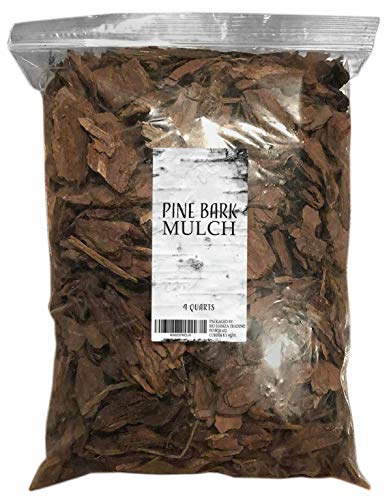 You do not need to relocate to the tropics to have an oasis of banana trees in your backyard. Many varieties of ornamental banana trees thrive in northern temperate regions, between USDA Plant Hardiness Zones 5 and 7. If you live in these regions and want to plant banana trees outdoors, you probably wonder how to prepare a banana tree for winter? We’ve researched how to winterize banana trees to get the best answer for you.
You do not need to relocate to the tropics to have an oasis of banana trees in your backyard. Many varieties of ornamental banana trees thrive in northern temperate regions, between USDA Plant Hardiness Zones 5 and 7. If you live in these regions and want to plant banana trees outdoors, you probably wonder how to prepare a banana tree for winter? We’ve researched how to winterize banana trees to get the best answer for you.
Winterize your ornamental banana tree just before the first frost, to be sure that the root system is protected from frigid temperatures.
Follow these simple steps:
- Cut away any dead foliage (pseudostem and leaves); leave 1-foot of pseudostem remaining above the ground.
- Insulate the root system by covering the top of the remaining pseudostem with a heaping pile of mulch.
Winterization of ornamental banana trees is simple, with just two steps you can ensure new spring growth. Keep reading, and we’ll explain in detail three different methods you can use to insulate the root system and protect the plant from harsh winter weather.
How Cold of an Environment Can Banana Trees Tolerate?
Ornamental banana trees can successfully grow in temperate climates as far north as the USDA Plant Hardiness Zone 5, where temperatures can drop to as low as -20℉ during winter months.
How to Prepare a Banana Tree for Winter?
If you are unable to relocate ornamental banana trees indoors for winter, you can protect outdoor trees from harsh winter temperatures by insulating the roots. Keep an eye on the forecast, because you will want to winterize the banana tree before the first frost to avoid any potential damage to the root system.
1. Cut Away Any Dead Foliage
Banana trees die naturally after they have produced flowers (or fruit on fruit-bearing varieties). The foliage will also die if exposed to cold temperatures. At the end of the plant’s life cycle, during late autumn, cut away dead foliage.
Cut away wilted, browned leaves. You can leave the fallen leaves at ground level because they will provide additional insulation. Cut the pseudostem at an angle, leaving approximately 1-foot of pseudostem standing above the ground.
2. Insulate the Root System
In cold climates, the rhizome of a banana tree stays dormant beneath the ground, similar to a bulb. As the soil warms during the spring, the rhizome regenerates new roots, and a new plant emerges.
Piled Insulation
To protect the buried rhizome of an ornamental banana tree from harsh winter temperatures, add a thick layer of insulation above the ground. Pile either mulch, wood chips, or leaves to entirely cover the remaining pseudostem.
Click here to find this pine bark mulch on Amazon.
For an added layer of protection, cover the entire mulch pile with a piece of plastic. Secure the edges of the plastic by placing heavy logs, bricks, or staking down the edges. Do not uncover or remove the pile until spring when there is no longer threat of frost.
Click here to find this tarp on Amazon.
Caged Insulation
As an alternative to piling mulch, you can create an insulated cage around ornamental banana trees. Install a lightweight, fine-mesh wire fence around the perimeter of the remaining pseudostem.
Next, fill inside of the fencing with either mulch, leaves, straw, or wood chips. The cage will keep the insulating material tidy and compact, rather than a sprawling pile that can be dispersed by the weather. Affix a plastic cover over the top of the cage.
Click here to find this wire plant protector on Amazon.
Wrapped Insulation
To prepare an ornamental banana tree for wrapped insulation, first, cut away the dead leaves. Cut each leaf at an angle, to avoid water pooling into the stem. Leave the remaining pseudostem.
Next, wrap the entire pseudostem with either fleece or burlap (or hessian). You might want to ask a helper to assist you with an extra pair of hands to help walk the large piece of fabric around the stem. Secure the wrap by using twine. This method is typically recommended for fruit-bearing banana trees.
Click here to find this industrial burlap roll on Amazon.
For additional protection during particularly long winters, you can now surround the wrapped banana tree with caged insulation.
Do Banana Trees Come Back After a Freeze?
During freezing temperatures, the foliage of an ornamental banana tree (leaves, flowers, pseudostem) will not survive. The leaves will wilt and turn brown. The stem will become discolored and mushy. Although the foliage dies, buried beneath the ground, the plant’s rhizome becomes dormant.
A well-insulated rhizome can survive a freeze. Come spring, as temperatures warm, the dormant rhizome will produce new plant growth. Preparing ornamental banana trees before the first frost can guarantee a protected rhizome so that you can enjoy a new ornamental banana tree for several summer seasons.
Ornamental banana trees grow rapidly, so each summer, your landscape is enriched by beautiful, fully grown foliage towering between 6-feet and 12-feet tall.
Which is the Most Cold Hardy Type of Banana Tree?
The cold hardy, Masa Basjoo variety grows well within USDA Plant Hardiness Zones 5 thru 10. Like most banana trees, the Musa Basjoo prefers full sun to thrive during peak summertime months. This smaller banana tree reaches heights between 8-feet and 10-feet tall. If protected for winter, Musa Basjoo will regrow the following spring.
Should I Cut Down My Banana Tree?
It is OK to cut back your ornamental banana tree to prepare for winter. This method is preferred for ornamental trees, but not typically recommended for trees that bear fruit. By removing the dead foliage, you will help to jumpstart growth or ornamentals trees in the spring.
Cut the pseudostem at an angle to prevent water from pooling inside of the remaining stem. Leave approximately 1-foot of pseudostem above the ground. Winterize the remaining stem above ground by using your preferred insulation method, as we have previously discussed.
If you winterize your ornamental banana trees, you can be sure to have a tropical summer in your backyard year after year.
Are you in search of tropical landscaping ideas? Get some inspiration from our blog posts:




